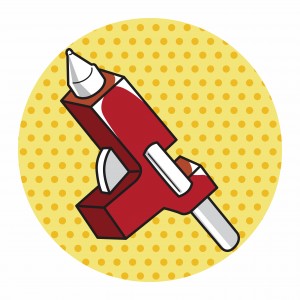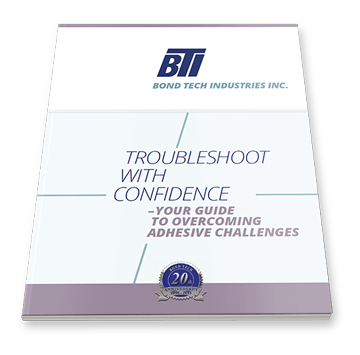Adhesives are typically composed of polymers. This means that their viscoelastic natures, what makes them sticky and stretchy, are constantly affected by any changes in temperature.
This effect changes depending on whether the adhesive is plastic or resin based.
Since there is such a varying degree of how temperature effects each type of adhesive, some things have to be considered.
The major effect temperature has on adhesive is melting it from a solid to a liquid or crystalizing the chemical components.
With certain adhesive products, there is a low melting point and the temperature resistance is so high that it can be used for many practical applications.
One main thing to contemplate is how hot an adhesive can get before its chemical properties change and it breaks down.
Polymers undergo many temperature reactions when heated, anything from melting to crystallization, as well as evaporation of certain components.
This can have dangerous results and can cause safety issues, so using the right adhesive for the right job is key to safety and longevity.
The effects on Mechanical Properties
Strength
When the temperature rises, a general decrease in the strength of an adhesive can occur.
Different kinds of adhesives have varying levels of temperature resistance, and some are higher than others.
Low temperatures do not usually have an adverse effect on adhesives, other than slight stiffness if the adhesive is used on moving parts, so heat is a huge concern.
Stiffness
Adhesives have a multitude of applications, and as they dry, their stiffness varies.
Heat can decrease their solidity, making them less stiff, and reductions in stiffness can lead to parts moving or sliding as the adhesive gives way.
This causes safety issues, as things may fall apart or break, injuring a person, but they can also cause equipment to not function properly.
Toughness
At higher temperatures, adhesive can become overly stiff and tough. In more rubbery adhesives, this toughness can change how effective the adhesive is.
Elasticity
The tendency for an adhesive to strain or break is increased when temperatures rise.
An adhesive’s chemical makeup alters at higher temperatures, breaking down the components, and causing the adhesive to crystalize and become unstable.
The adhesive can then crack or shatter, no longer being useful.
Types of Adhesives
Water Based
There are many kinds of adhesives, each with their own set of advantages.
Water based are easy to handle, high grade, safe, effective, non-toxic, non-flammable, and easy to dilute.
Dry Blend
This type of adhesive is one of the most economical choices.
They are operator friendly, formulated specifically for what the client needs, cost-effective, superior quality, and are consistent in how they are created.
Hot Melt
Adhesives that are cold and must be heated in order to use, offer a customer many advantages.
Hot melt adhesives are solvent free, thermoplastic materials that are supplied in a chicklet, slat or block form and applied in a molten state. Hot melt’s biggest advantage is that they can bond almost instantly.
A Company You Can Trust
We understand that customers want high quality and cost-effective options.
And we won’t sacrifice products for service, or vice-versa.
Contact us today regarding your adhesive needs and we’ll respond in a professional and courteous manner.








